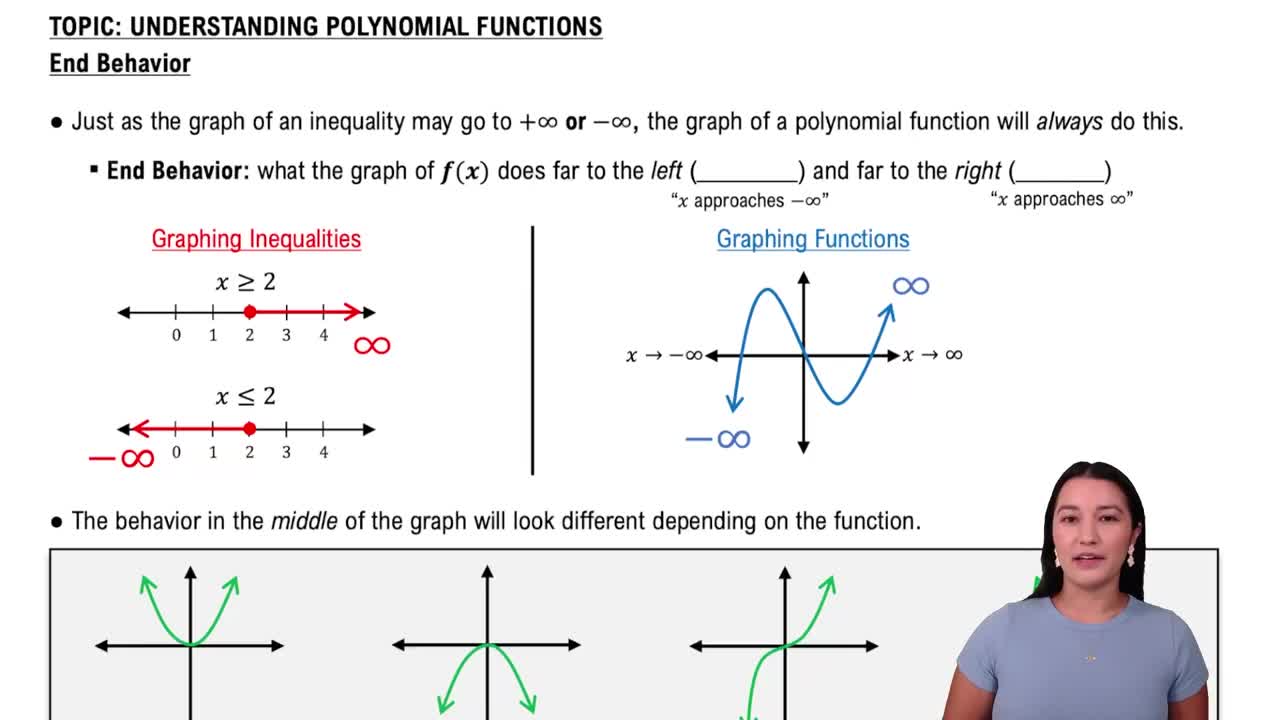Here are the essential concepts you must grasp in order to answer the question correctly.
Function Composition
Function composition is the process of combining two functions, where the output of one function becomes the input of another. In this case, (g∘ƒ)(-2) means we first evaluate the function ƒ at -2, and then take that result and use it as the input for the function g. Understanding how to properly execute this sequence is crucial for solving the problem.
Recommended video:
Evaluating Functions
Evaluating functions involves substituting a specific value into a function to find its output. For example, if ƒ(x) is defined in a table, to find ƒ(-2), you would look up the value corresponding to -2 in that table. This step is essential in function composition, as the output of the first function directly influences the input of the second function.
Recommended video:
Evaluating Composed Functions
Understanding Function Notation
Function notation is a way to represent functions and their operations clearly. The notation g∘ƒ indicates the composition of functions g and ƒ, while ƒ(-2) and g(y) denote the evaluation of these functions at specific points. Familiarity with this notation helps in interpreting and manipulating expressions involving multiple functions.
Recommended video:
End Behavior of Polynomial Functions
 Verified step by step guidance
Verified step by step guidance Verified video answer for a similar problem:
Verified video answer for a similar problem:



 4:56m
4:56m